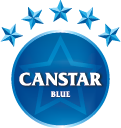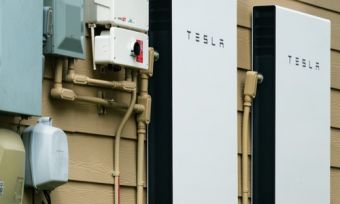Best Solar Feed In Tariff NSW
Looking for a better solar plan or provider in Sydney? We compare plans and providers that operate in and around the Sydney area to help you find the best fit for your needs.

Start with your postcode
to compare 1,500+ Canstar Blue expert rated plans
Showing 10 of 71 results
Unsure of a term in the above table? View glossary
The initial results in the table above are sorted by Solar feed-in tariff (High-Low) , then Price/year (estimated) including conditional discount (Low-High) , then Brand Satisfaction (High-Low) . Additional filters may have been applied, which impact the results displayed in the table - filters can be applied or removed at any time.
Latest in solar energy
Australians are embracing solar, thanks to the potential for cheaper energy costs, a lower reliance on the electricity grid, and the value panels can add to your home. But installing a solar panel system is only the first step in making the most of solar power – you’ll also want to find a home electricity plan with a good solar feed-in tariff.
The options available to you will vary depending on your location. But residents in New South Wales have a range of providers and plans to pick from. We’ll take you through the solar feed-in tariffs on offer in NSW below.
On this page:
- Which provider has the best solar feed-in tariff in NSW?
- The best solar feed-in tariffs in NSW
- Which is the best solar energy provider?
- How do I know what my solar feed-in tariff is?
- Is there a minimum feed-in tariff in NSW?
- Are solar-specific plans available in NSW?
- Energy rates or solar feed-in tariffs: What’s more important?
- Is solar worth it in NSW?
Which provider has the best solar feed-in tariff in NSW?
GloBird Energy currently has the best solar feed-in tariff in NSW, where eligible customers on a single rate tariff can get 12 cents per kilowatt hour (c/kWh) for feeding electricity into the grid.
Origin Energy Solar Feed-in Tariffs NSW
Origin Energy offers an 8c/kWh feed-in tariff in NSW for the first 8kWh before receiving the standard rate of 5c/kWh.
The best minimum and maximum solar feed-in tariffs in NSW
In the table below, you’ll find a list of minimum and maximum solar feed-in tariffs available from retailers in New South Wales. Some of these companies may not operate in all areas of NSW, while some FiTs may only be available when certain conditions are satisfied. Please check each provider’s website for further details.
Here are the plans with the lowest solar feed-in tariffs from the retailers on our database. These costs are based on the Ausgrid network in Sydney but prices will vary depending on your circumstances. We show one product per retailer, listed in order of lowest price first. Annual price estimates assume general energy usage of 3900kWh/year for a residential customer on a single rate tariff. Price estimates exclude solar feed-in tariff credits. Our database may not cover all deals in your area, please check retailer websites for up to date information.
Here are the plans with the highest solar feed-in tariffs from the retailers on our database. These costs are based on the Ausgrid network in Sydney but prices will vary depending on your circumstances. We show one product per retailer, listed in order of lowest price first. Annual price estimates assume general energy usage of 3900kWh/year for a residential customer on a single rate tariff. Price estimates exclude solar feed-in tariff credits. Our database may not cover all deals in your area, please check retailer websites for up to date information.
Which is the best solar energy provider?
Red Energy is currently ranked as Australia’s best solar energy provider, topping our customer satisfaction ratings in 2024. The Aussie-owned company scored five-star reviews for its customer service, bill and cost clarity, ease of sign-up and overall satisfaction. Red Energy has only one solar-specific plan on offer in NSW, however it does offer standard FiTs across its market offers in all states.
How do I know what my solar feed-in tariff is?
Your solar feed-in tariff will be located on your last energy bill or statement. It should be listed under the summary of charges which is normally found on the second page of your bill. This section should outline your feed-in tariff (per kWh), how much electricity you’ve exported (i.e. 2,000kWh), as well as the amount of money you’ll have deducted off your bill.
Alternatively, check the energy price fact sheets of your plan, as all power companies must provide these documents. This sheet contains all the fees, charges and rates you’ll be paying. Unfortunately, some retailers make these documents harder to find than others, but as a general rule of thumb, they’re normally found at the bottom of each retailer’s website.
Is there a minimum feed-in tariff in NSW?
While there’s no set minimum feed-in tariff rate in NSW, there is a benchmark range of 4.0 to 6.3c/kWh, according to NSW’s Independent Pricing and Regulatory Tribunal (IPART). Unlike Victoria where there is a minimum FiT of 3.3c/kWh, solar customers in NSW will have to pay extra attention to a plan’s FiT rate or risk signing up to a dud deal.
Are there solar-specific plans available in NSW?
Some energy retailers offer solar-specific plans for customers looking to maximise returns on their solar systems, however these are not always publicly available. It could be a short-term promotion or it may be a case where customers must purchase an eligible PV system through an energy retailer’s third-party solar installation company.
Energy rates or feed-in tariff: What’s more important?
There’s no point in having solar panels only to realise the electricity plan you’re on is cactus. While feed-in tariffs will make a difference to your power bills if you’re generating enough electricity to feed back into the grid, you should still be wary of the rates you’re paying. All electricity plans have usage and supply charges, which are the underlying rates you pay for consuming power as well as having energy supplied to your address.
Get into a habit of checking the energy rates on all plans, regardless of how high the feed-in tariff might be. If your solar system isn’t producing enough exportable power, you may find that an energy plan with inflated base rates will cancel out any guarantees of a credit on your next bill. Conversely, if your solar PV system is exporting plenty of power, you may be able to justify paying higher electricity rates in exchange for a high FiT. Ultimately it will come down to your personal needs and situation.
Is solar worth it in NSW?
Moving one step off the grid in NSW can be made possible by installing solar, and is a great way for households to become more self-sufficient. However, unlocking value from a solar system usually takes time, so don’t expect a return on your investment overnight, even if you manage to snag a good solar rebate. With PV systems costing well into the thousands, it’s incredibly important you do your homework.
Just like it’s equally important to review energy prices frequently, regardless if you have solar or not. This way you stay on top of the latest deals in your area.
About our electricity experts
 Tara Donnelly: Utilities Editor
Tara Donnelly: Utilities Editor
As Canstar Blue’s Utilities Editor, Tara Donnelly covers the internet, mobile and energy sectors – topics she’s spent a decade focused on, alongside consumer technology, within the comparison industry. Her telco expertise has seen her appear in national media including 9 News, 7 News, Sunrise, the ABC and The Sydney Morning Herald. You can follow Tara on LinkedIn
Meet the Editorial Team

Breanna Gream: Data Insights Team Lead
Breanna Gream is Canstar’s Data Insights Team Lead, and is responsible for developing the methodology and delivering Canstar Blue’s Value Ranking for the energy and telco sectors. She holds a dual degree in Business and Mathematics from the Queensland University of Technology, and enjoys using her skills to help consumers find more suitable utilities plans. Connect with Breanna on LinkedIn.
Meet the Research Team
Important information
For those that love the detail
This advice is general and has not taken into account your objectives, financial situation or needs. Consider whether this advice is right for you.



















